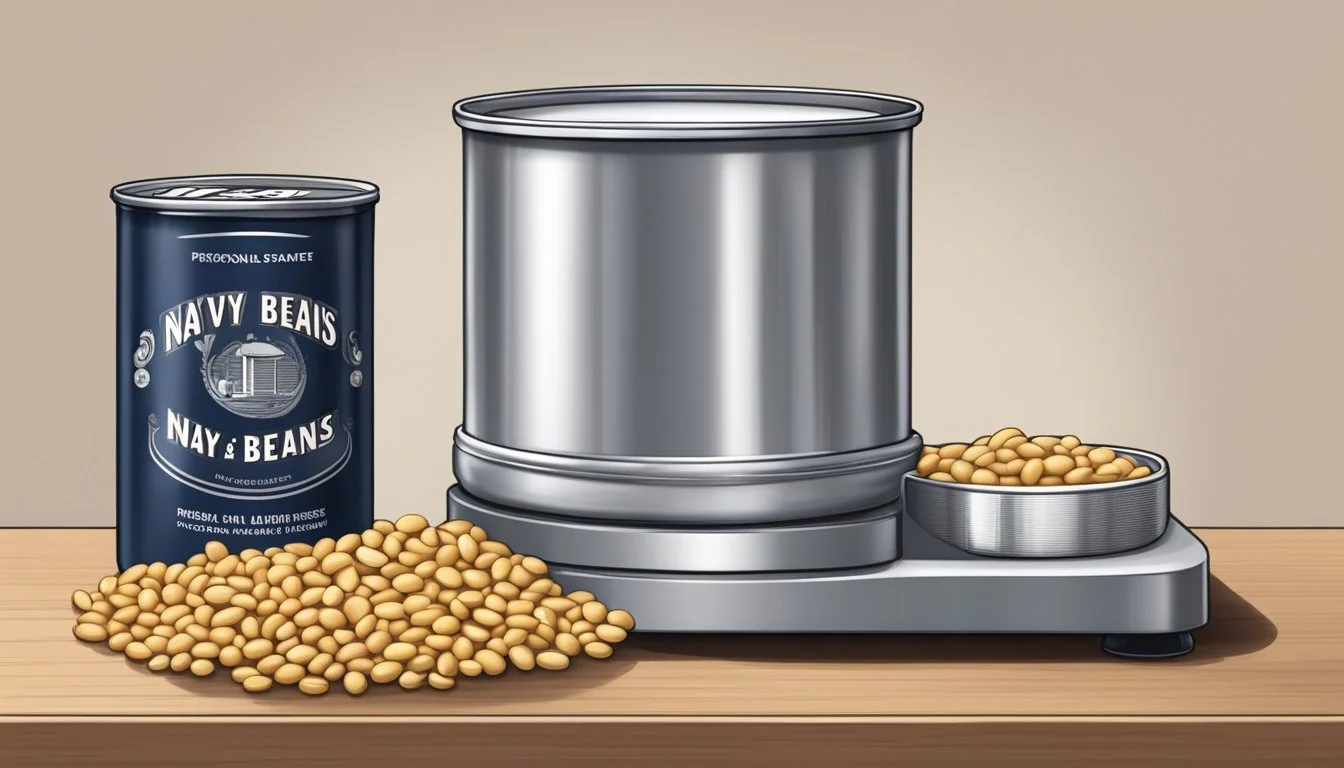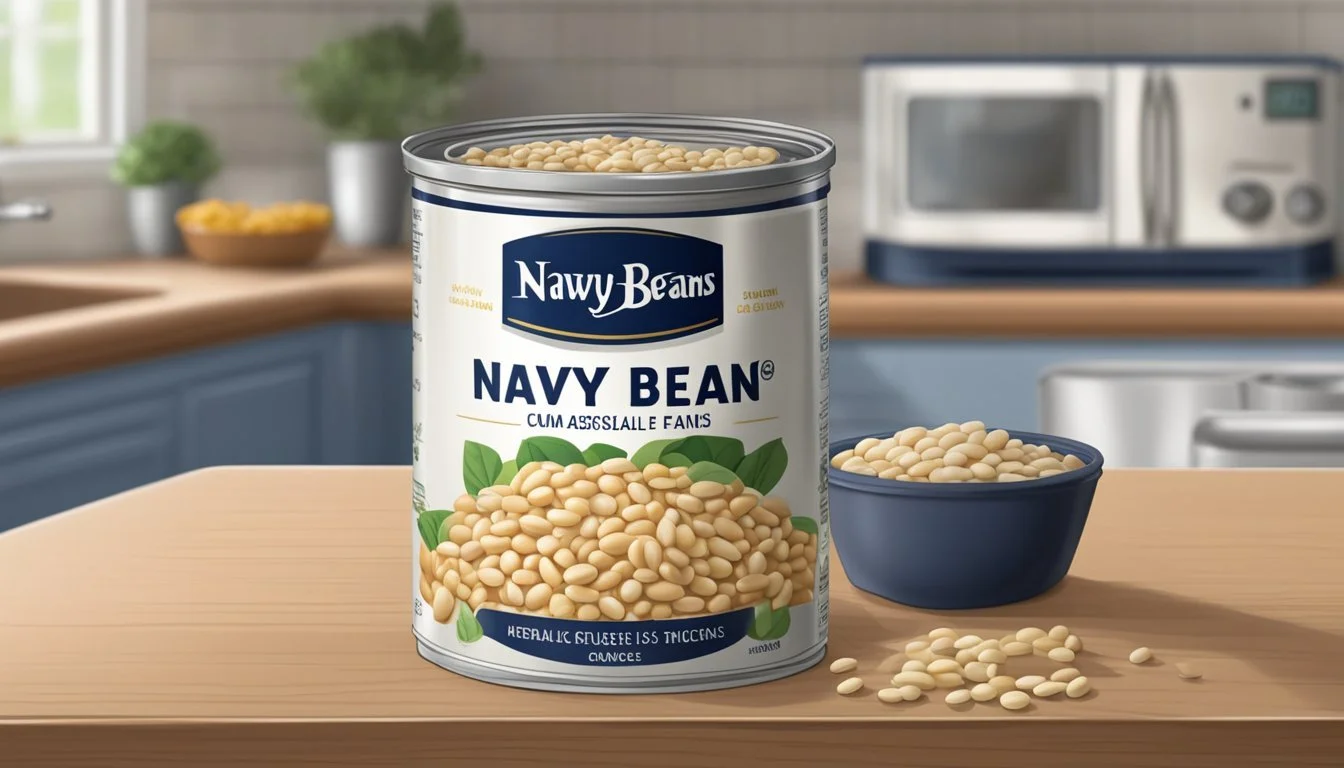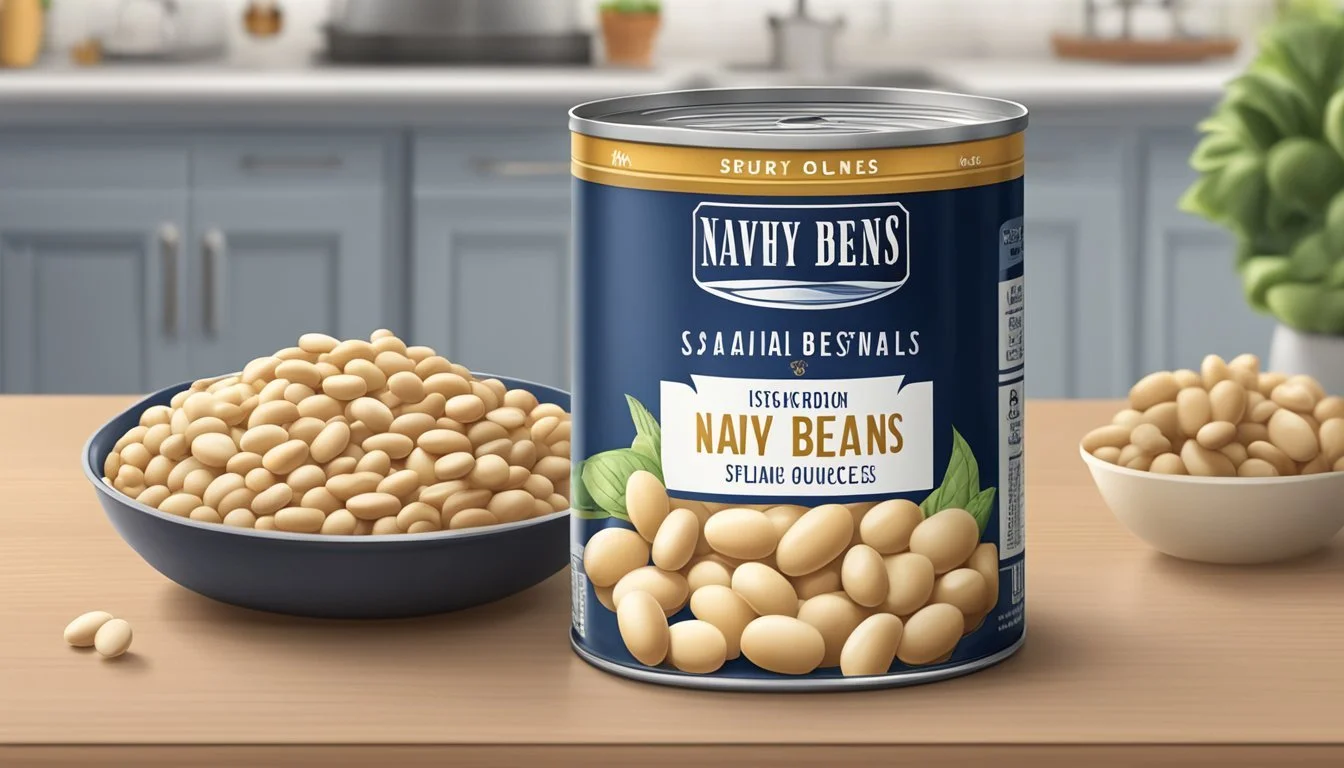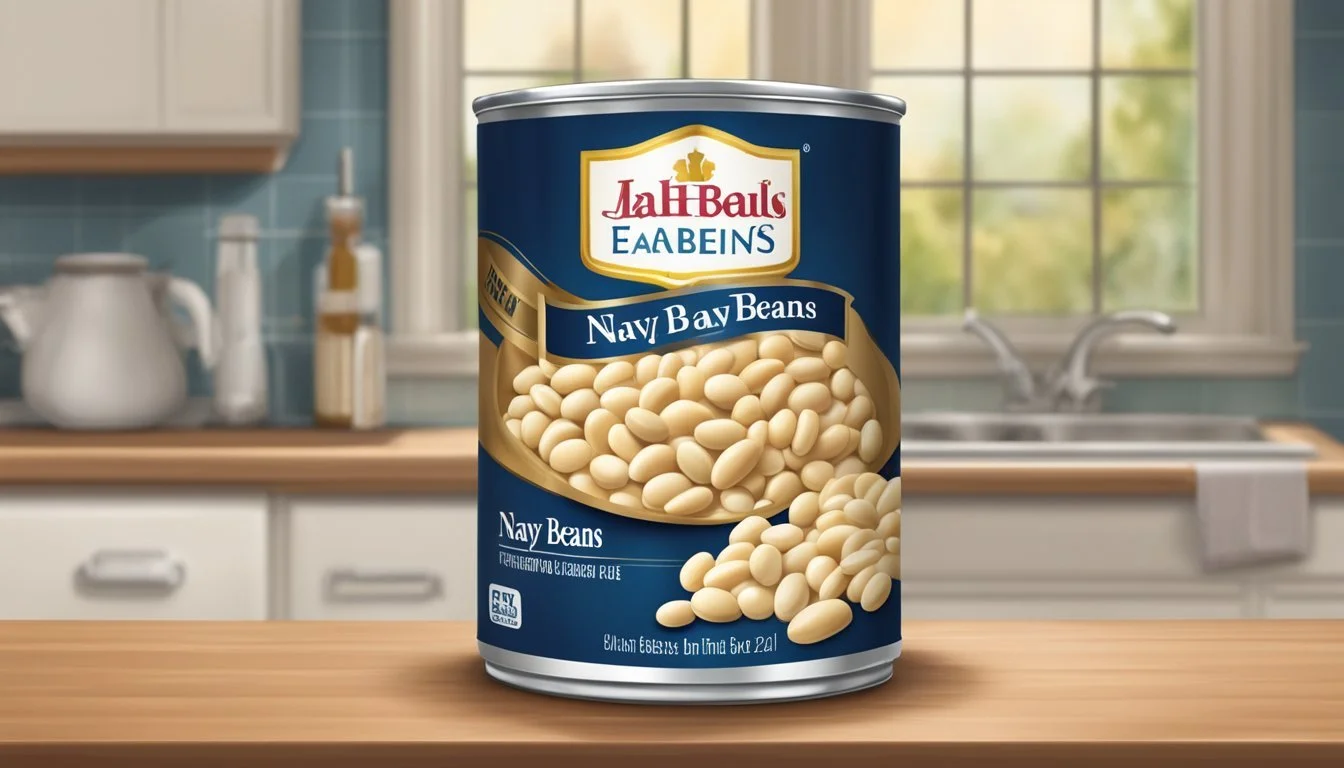How Many Ounces in a Can of Navy Beans?
Unveiling Can Sizes and Measurements
Understanding the quantity of navy beans one receives in a can is important for both home cooks and professionals who rely on precise measurements for their recipes. A standard can of navy beans typically contains 15 ounces, with the weight referring to the total contents including both the beans and the liquid. When drained, the weight of the beans alone is less - usually around 9 to 10 ounces.
For those who use canned beans frequently, it's worth noting that the weight on the label is not the net weight of the beans themselves, but rather the combined weight of the beans and the packing liquid. This is a standard practice across various canned goods. Additionally, the actual amount can vary slightly between different brands and batches, but generally stays within this range.
In recipes where precision is key, this information can be crucial for making accurate conversions from canned to cooked or dried navy beans. Home cooks can thereby adjust their recipes depending on whether they're using canned navy beans or cooking beans from scratch. The consistency in can sizes helps to ensure that substitutions can be made with confidence, maintaining the intended flavor and texture of the dish.
Understanding Can Sizes and Contents
Determining the contents of a can by its size is essential for cooking accuracy. Specific measurements assist consumers in understanding how much product they are purchasing and using.
Standard Can Dimensions
Standard cans come in various dimensions, often categorized by a number system that correlates to specific measurements in inches and ounces. Typically, the can size is presented using two three-digit numbers separated by an "x", where the first sequence represents the diameter and the second the height.
A #300 can is about 3 inches in diameter and 4.4 inches tall.
A #303 can typically measures 3.5 inches in diameter and 4.25 inches tall.
Navy Beans Can Size and Volume
Navy beans are commonly packed in cans that correspond to the #300 can size. This can implies:
Volume: Approximately 1.75 cups (14 fluid ounces).
Dimensions: 3 inches in diameter by 4 to 4.25 inches in height.
When recipes call for a "can of navy beans," they are often referring to this size, which is a standard across many brands.
Weight Measurements for Beans
The weight of navy beans in a #300 can, which holds approximately 1.75 cups or 14 fluid ounces of beans, translates to:
Weight: Roughly 14 to 16 ounces when drained.
These weight measurements provide guidance for substituting canned beans with cooked or dried alternatives. Moreover, it helps in nutritional calculations and portion control for dietary considerations.
Navy Beans Specifics
Understanding the specifics of navy beans, especially in terms of measurements, is key for cooking and baking. Proper conversion allows for accurate recipe following and food preparation.
Cooked Navy Beans Details
Cooked navy beans are a versatile ingredient commonly used in a variety of dishes. In terms of volume and weight, a half-cup serving of cooked navy beans typically provides a nutritious balance of complex carbohydrates and dietary fiber. They contain around 23.7 grams of complex carbohydrates and 9.6 grams of fiber, with minimal sugar content.
Conversions for Dried to Canned Navy Beans
When it comes to conversions between dried and canned navy beans, precision is important. The following details offer a guide for converting dried navy beans to their cooked and canned counterparts:
1 can of navy beans, when drained, is typically equivalent to 1.5 cups of cooked navy beans.
Conversely, 1/2 cup of dried navy beans generally equates to approximately 1.5 cups of cooked navy beans once hydrated and cooked.
Dried Navy Beans Cooked Navy Beans Canned Navy Beans 1/2 cup 1 1/2 cups 1 can (drained)
It is noted that one 15-ounce can of navy beans, once drained, usually weighs about 10 ounces. The information ensures that whether one is using dried, cooked, or canned navy beans, they can achieve the correct volume and weight necessary for their culinary endeavors.
Nutritional Profile of Navy Beans
Navy beans are renowned for their beneficial nutritional content, including a balance of protein and fiber, low fat, and an array of essential minerals and vitamins.
Caloric and Macronutrient Information
Calories: A 1-cup serving of cooked navy beans contains approximately 255 calories, making them a moderate-calorie food choice.
Protein: Protein makes up about 26% of the caloric content, with around 15 grams per cup serving.
Carbohydrates: Navy beans are high in complex carbohydrates, with a 1-cup serving providing about 47 grams.
Fiber: High in dietary fiber, there are approximately 19 grams of fiber per cup, which is 68% of the daily value.
Fat: They are low in fat, with a cup of navy beans containing only around 1 gram of total fat.
Minerals and Vitamins in Navy Beans
Iron: Navy beans are a good source of iron; 1 cup provides roughly 4.3 mg, which is about 24% of the recommended daily intake.
Calcium: There's a modest amount of calcium in navy beans, with a cup serving offering around 127 mg, contributing to bone health.
Potassium: One cup of navy beans contains about 700 mg of potassium, which is essential for heart and muscle function.
Sodium: When canned and drained, navy beans contain around 531 mg of sodium per cup, but cooking them from dry can significantly lower sodium content.
Vitamins: Although not as rich in vitamins as in minerals, navy beans do offer some B vitamins, including folate, which is crucial for DNA synthesis and repair.
Culinary Applications
Navy beans, prominently featured in a variety of dishes, offer a blank canvas for a host of flavors while providing nutritious benefits. They are integral to many recipes and are valued for their ability to be substituted with other legumes without compromising the dish's integrity.
Recipes Involving Navy Beans
Navy beans are key ingredients in several bean recipes. A classic Navy Bean Chili utilizes navy beans for their creamy texture, which complements the rich flavors imparted by spices and seasonings. Similarly, a Navy Bean Salad offers a refreshing dish where the beans' subtle flavor balances the vibrant dressing and fresh vegetables.
Bean Recipes
Chili: Canned or cooked beans simmered with tomatoes, onion, garlic, and a blend of spices like cumin, chili powder, and paprika.
Bean Salad: Chilled cooked beans tossed with diced peppers, onions, dressing (oil, vinegar, or citrus), and fresh herbs.
Cooking and Preparation Tips
When preparing navy beans from their dried form, it's important to soak them overnight or perform a quick soak by boiling for a few minutes and then letting them stand for an hour. For cooked beans, the general rule of thumb is to simmer until they are tender, which can take 1.5 to 2 hours. Seasonings like bay leaves, thyme, and garlic can be added during cooking to enhance flavor.
Preparation Tips for Dried Beans
Soaking: Overnight or quick soak to reduce cooking time.
Cooking: Simmer with seasonings until tender.
Final Touches: Finish with salt or acidic components after beans are fully cooked to avoid toughening.
Bean Substitutions and Varieties
Although navy beans have a distinct role in recipes, substitutions are often possible and can introduce new flavors and textures. For example, Great Northern beans or cannellini beans can replace navy beans in a recipe due to their similar size and mild flavor. Other legumes like black beans, kidney beans, or even chickpeas, offer different flavor profiles but can still maintain the structure of the dish like stews or salads.
Common Bean Substitutions
Navy Beans: Replaced by Great Northern beans, cannellini beans, or pinto beans.
Other Legumes: Black beans, kidney beans, chickpeas, and even lentils or lima beans can be alternates depending on the recipe.
Preservation and Storage
When it comes to pantry staples like navy beans, both canned and dried forms have significant storage advantages, while cooked navy beans can also be frozen for extended shelf life.
Storing Canned and Dried Beans
Canned navy beans are a convenient product that carry a relatively long shelf life due to the preservation process involved in canning. Typically, an unopened can of navy beans can last for several years when stored in a cool, dry place away from direct sunlight. Once opened, it is recommended to transfer any unused beans to a sealed container and refrigerate them, where they can last for about 3 to 5 days.
On the other hand, dried navy beans are also a durable storage option. They should be kept in a cool, dark area in an airtight container to prevent moisture from reducing their quality. If stored properly, dried navy beans can remain usable for up to 2 to 3 years. While the beans are safe to eat beyond this time, their quality, including texture and flavor, may diminish.
Freezing Cooked Beans
Cooked navy beans can be frozen to significantly extend their shelf life beyond the few days they would last in the refrigerator. For optimal results, cooked beans should be cooled completely before being frozen to prevent the formation of ice crystals. Additionally, it's important to leave some space at the top of the freezing container to allow for expansion. When stored correctly in a freezer-safe container or bag, cooked navy beans can be kept for up to 6 months. It is crucial to freeze the beans within two hours of cooking to preserve their safety and quality.
When freezing cooked navy beans, labeling the container with the date of freezing can help manage and use the beans within the recommended time frame. Thawing frozen beans in the refrigerator overnight before use ensures they retain their quality for incorporation into subsequent meals.
Health and Dietary Considerations
When considering the health and dietary implications of navy beans, it's essential to focus on their rich dietary fiber content and the benefits of their low-fat and low-cholesterol composition. These factors play significant roles in overall nutrition and health.
Dietary Fiber Benefits
Navy beans are a substantial source of dietary fiber, which is crucial for maintaining digestive health. A half-cup serving of navy beans provides roughly 9.6 grams of fiber, contributing to the recommended daily intake. Fiber aids in digestion by helping to regulate bowel movements, and it can also assist in controlling blood sugar levels by slowing down the absorption of carbohydrates.
Nutrient Amount in a half-cup serving of navy beans Dietary Fiber 9.6 grams
Low-Fat and Cholesterol Impact
Navy beans offer a nutritional profile that is beneficial for heart health due to their minimal amount of fat and absence of cholesterol. They are predominantly composed of complex carbohydrates and plant-based protein, with a standard can, which typically contains around 15 ounces, offering a healthy addition to any diet without adding saturated fat. This makes navy beans a fitting choice for individuals monitoring their cholesterol levels or seeking heart-healthy food options.
Nutrient Amount in navy beans Saturated Fat Minimal Cholesterol 0 grams (cholesterol-free)
This composition of nutrients supports a diet that seeks to minimize lifestyle-related health risks, such as cardiovascular diseases.
Shopping and Brand Selection
When selecting a can of navy beans, shoppers should consider the brand reputation for quality, the size of the can, and the cost-effectiveness of their purchase.
Evaluating Brands and Quality
Consumers should be mindful of the brand when purchasing navy beans as it can be a strong indicator of quality. Established brands typically adhere to more stringent quality standards and offer beans that are uniform in size, properly cooked, and free from defects. Additionally, the packaging process of reputable brands often ensures better preservation of the beans' flavor and texture. Shoppers may want to look for organic labels or non-GMO certifications if those factors are important to their buying decision.
Price Comparison and Value
Price can vary significantly between brands and stores. Shoppers should compare the price per ounce when looking for the best deal. A standard size for navy beans is usually a 15-ounce can, which commonly contains about 1 to 1.5 cups of beans once drained.
Below is a brief comparison table to help evaluate value:
Brand Size (ounces) Price ($) Price per Ounce ($) Brand A 15 1.29 0.086 Brand B 15 1.49 0.099 Brand C (Organic) 15 1.99 0.133
Purchasing in bulk or choosing store brands can often provide better value, though shoppers should still verify the quality and taste preference. Furthermore, some brands may offer larger sizes, such as 19-ounce cans, which could be more convenient and cost-effective for families or those cooking in larger quantities.









